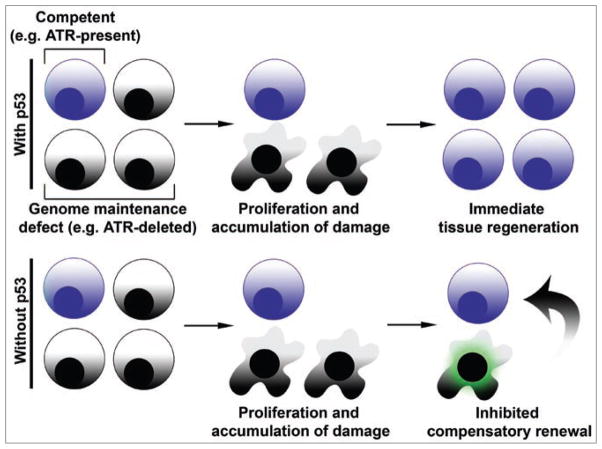Figure 1.
An important role for limiting the accumulation of damaged cells in facilitating tissue renewal. (Top) Defects in genome maintenance (e.g. ATR, Hus1 or Terc loss) lead to the accumulation of DNA damage during replication. In the presence of p53, extensively damaged cells are rapidly eliminated from proliferative tissues, and these tissues are subsequently reconstituted by less damaged or fully competent cells. (Bottom) In the absence of p53, damaged cells accumulate in proliferative tissues and may accrue higher levels of genomic instability. The persistent accumulation of these highly damaged cells ultimately impedes the immediate compensatory regeneration of the tissue by intact progenitors.

